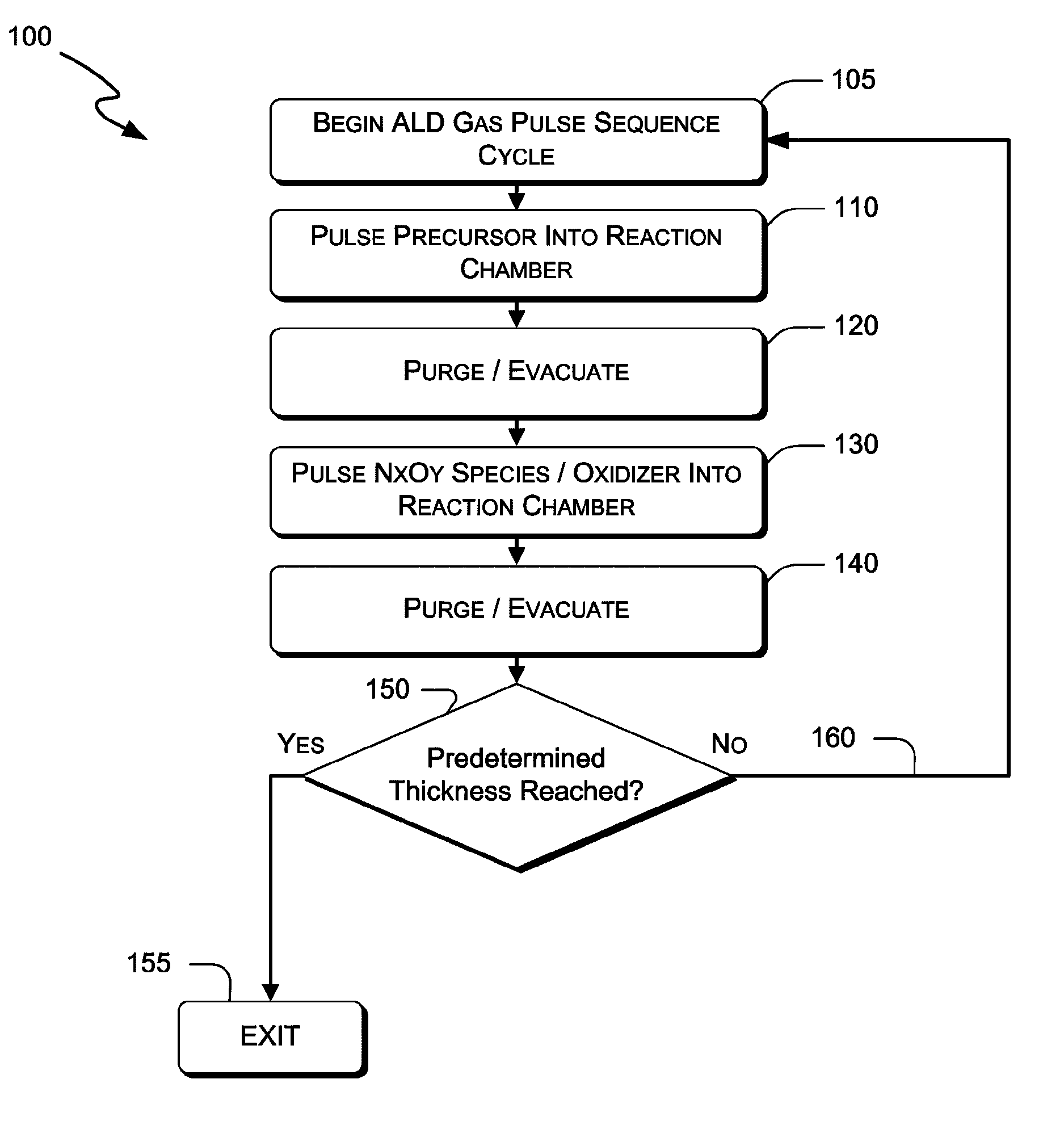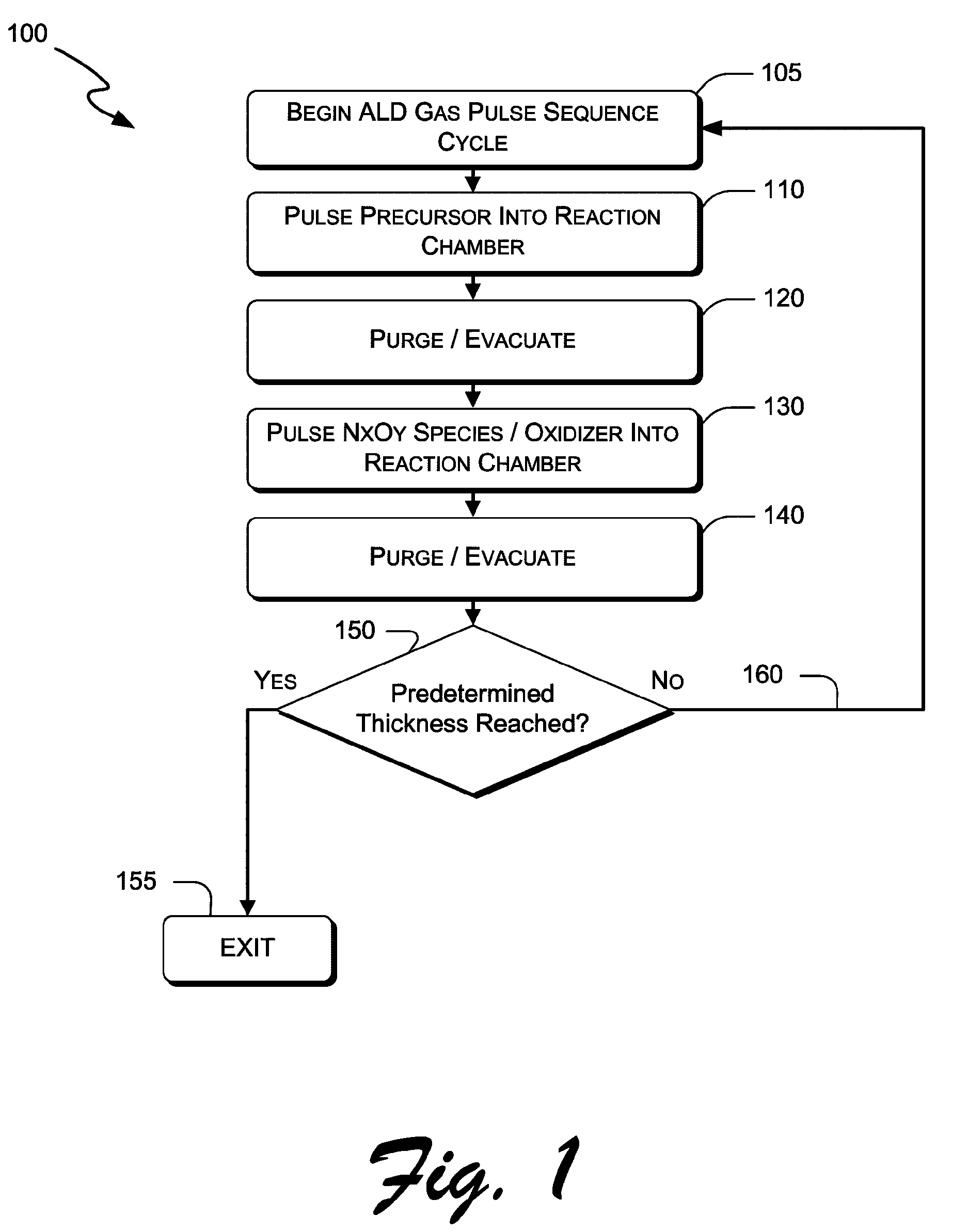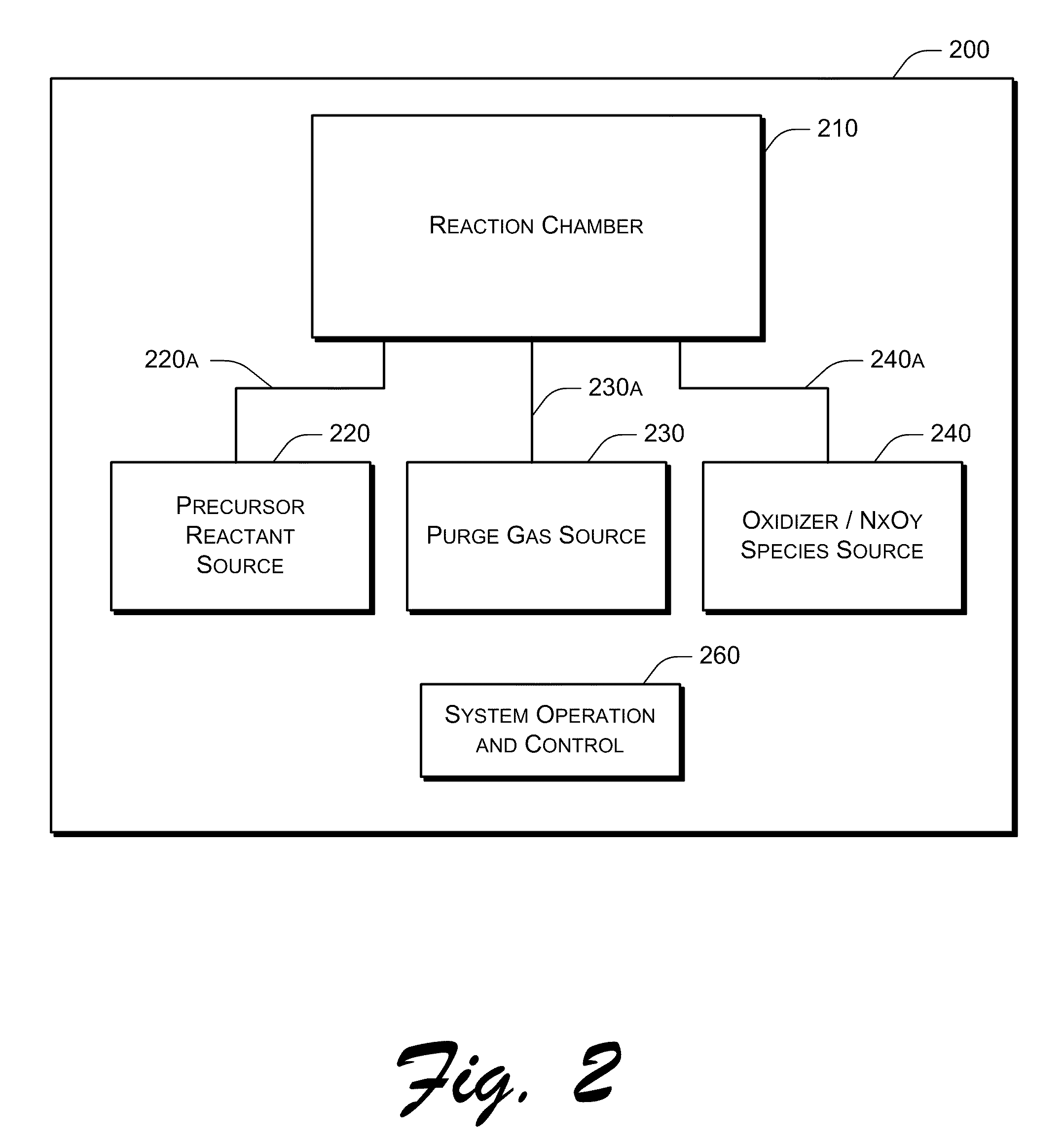Systems and methods for thin-film deposition of metal oxides using excited nitrogen—oxygen species
a technology of metal oxide and excited nitrogen, applied in the field of thin film deposition, can solve the problems of increasing leakage current, increasing leakage current, controlling leakage current to maintain high speed and low power performance, and achieves the effect of improving deposition efficiency and uniformity
- Summary
- Abstract
- Description
- Claims
- Application Information
AI Technical Summary
Benefits of technology
Problems solved by technology
Method used
Image
Examples
Embodiment Construction
[0002]1. Field of the Invention
[0003]The present invention relates to thin film deposition, and more particularly to systems and methods using precursors to deposit metal oxides by atomic layer deposition using ozone and excited nitrogen-oxygen species.
[0004]2. Background of the Invention
[0005]For many years, silicon dioxide (SiO2) has been used in semiconductor substrates for components such as transistor gate dielectrics and capacitor dielectrics. However, as circuit components have reduced in size, the electrical performance characteristics of SiO2 result in undesirable effects such as increased leakage current. Controlling leakage current to maintain high speed and low power performance presents a challenge when older-generation dielectrics such as SiO2 are used in the fabrication of newer integrated circuit geometries.
[0006]Newer processes, especially those that use fabrication geometries less than 65 nm have begun to include high dielectric constant (“high-k”) insulators in se...
PUM
| Property | Measurement | Unit |
|---|---|---|
| voltage | aaaaa | aaaaa |
| gap distance | aaaaa | aaaaa |
| diameter | aaaaa | aaaaa |
Abstract
Description
Claims
Application Information
 Login to View More
Login to View More - R&D
- Intellectual Property
- Life Sciences
- Materials
- Tech Scout
- Unparalleled Data Quality
- Higher Quality Content
- 60% Fewer Hallucinations
Browse by: Latest US Patents, China's latest patents, Technical Efficacy Thesaurus, Application Domain, Technology Topic, Popular Technical Reports.
© 2025 PatSnap. All rights reserved.Legal|Privacy policy|Modern Slavery Act Transparency Statement|Sitemap|About US| Contact US: help@patsnap.com



